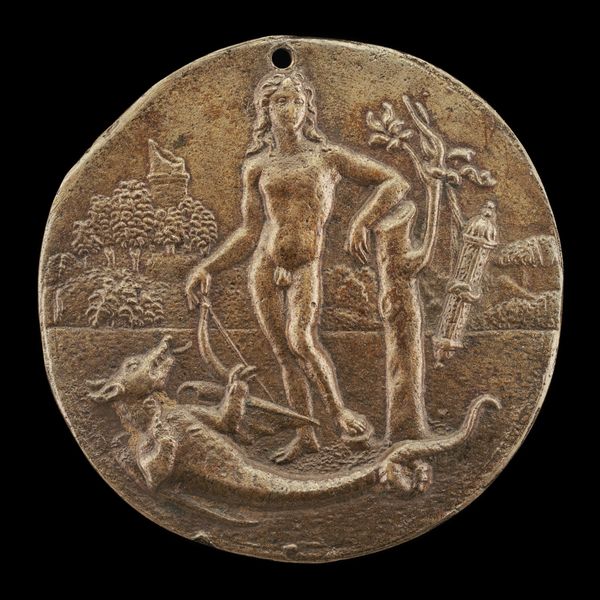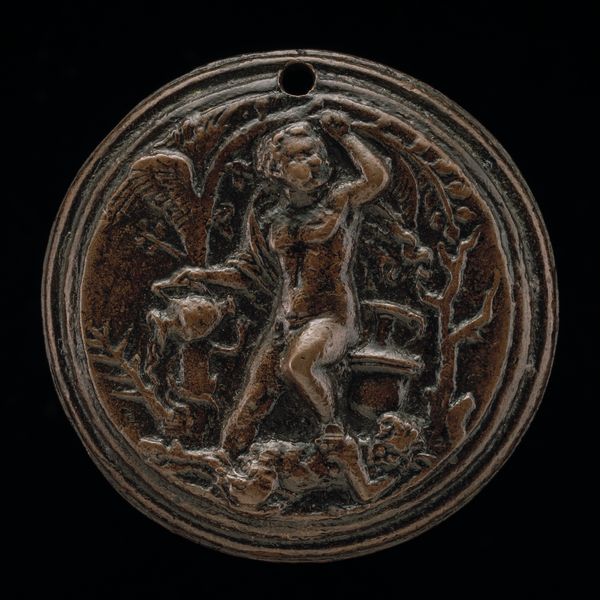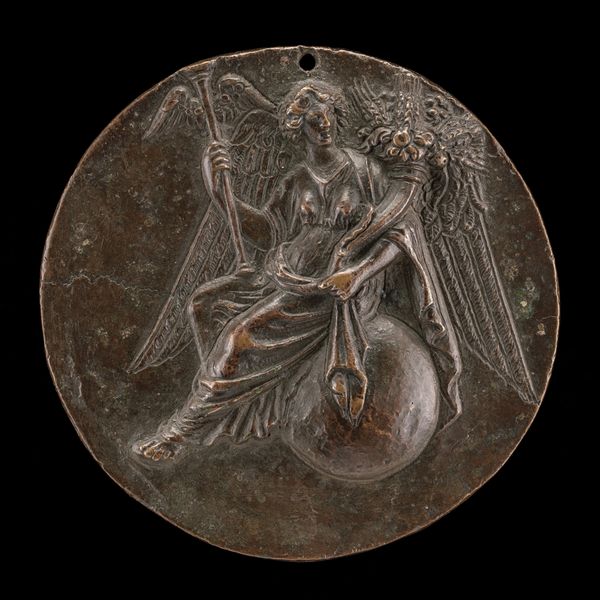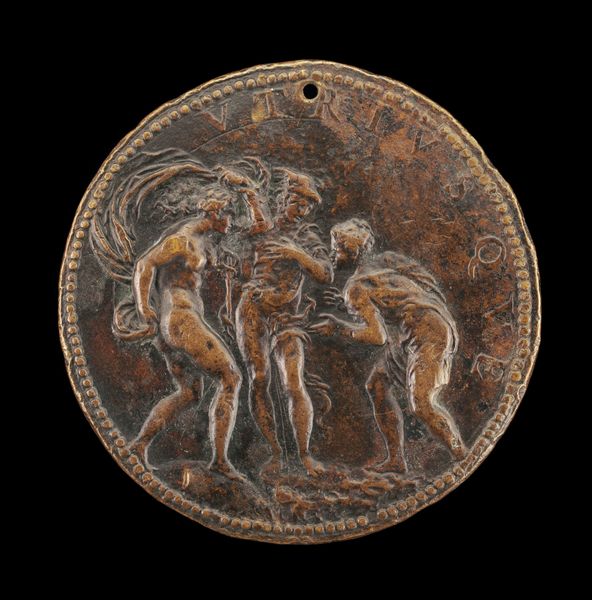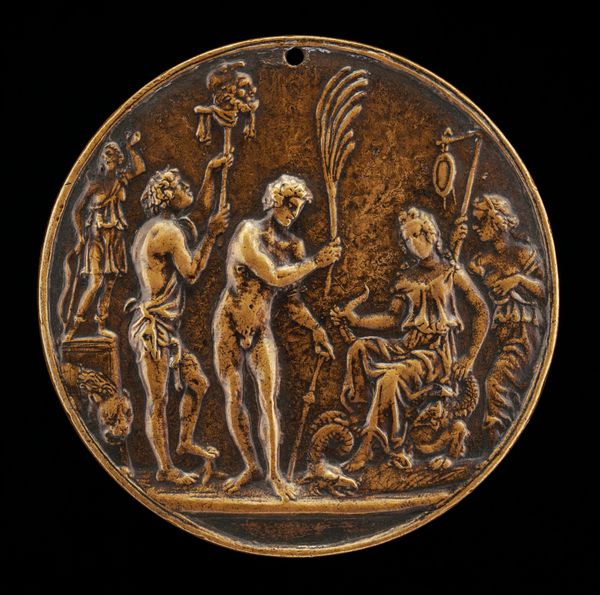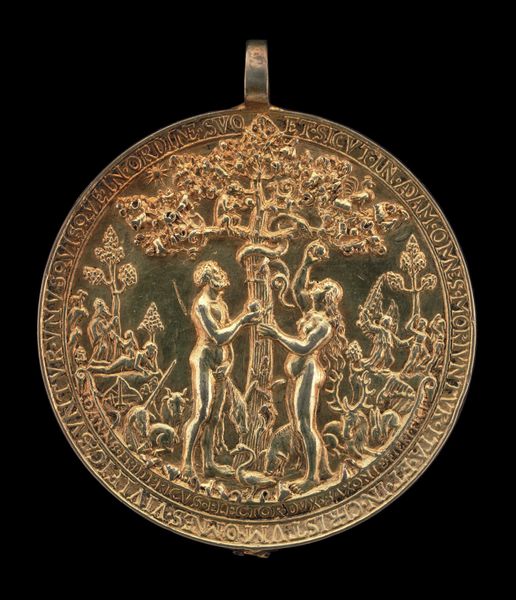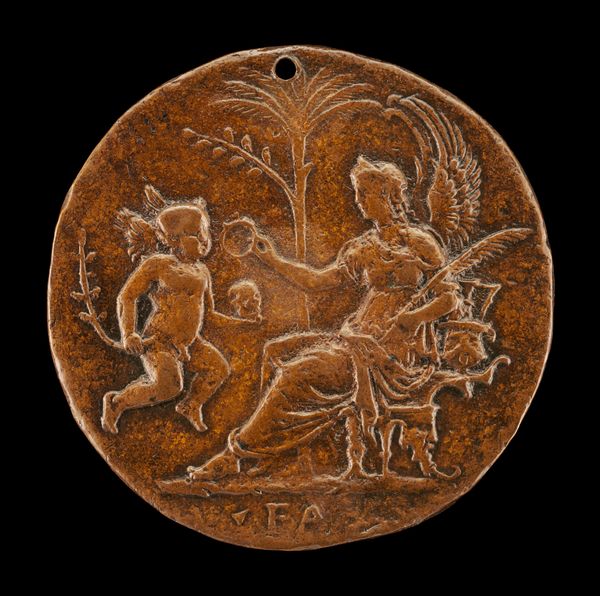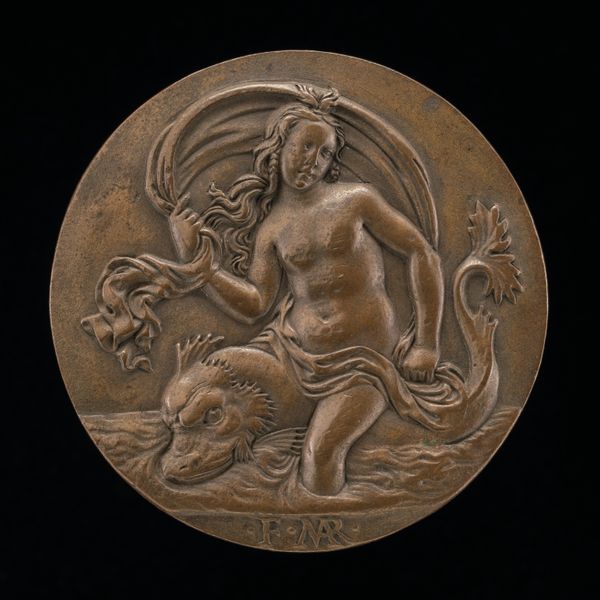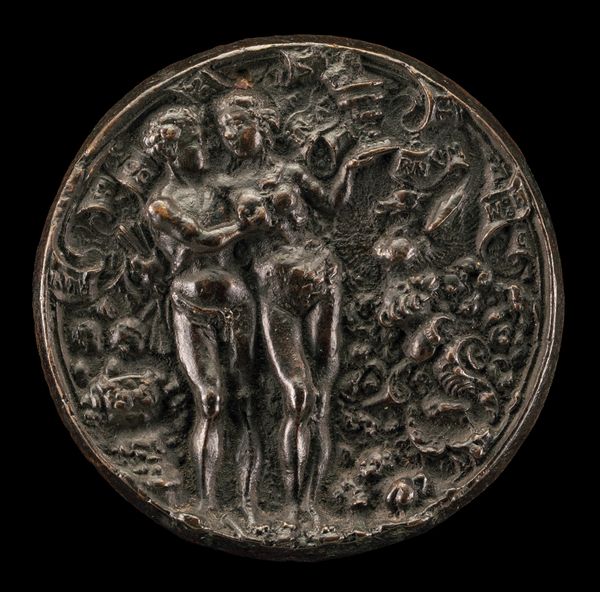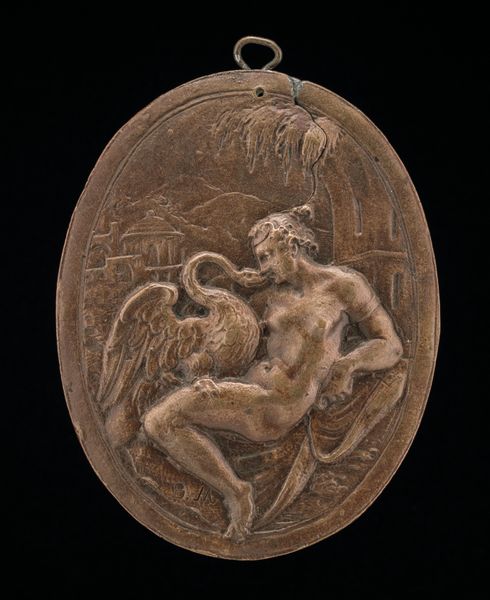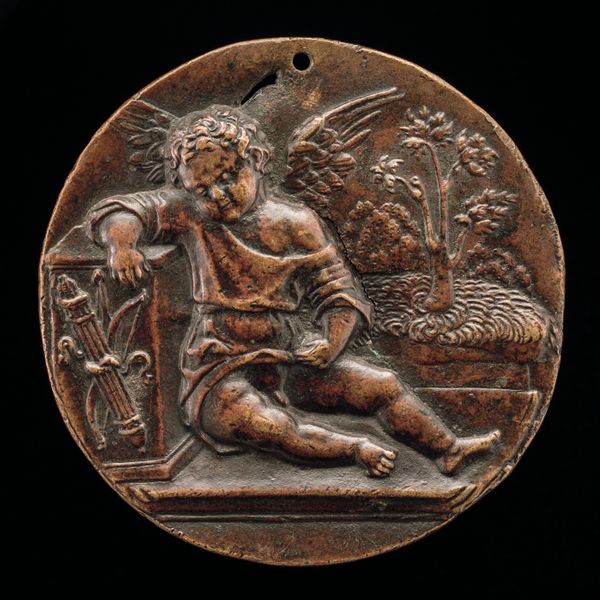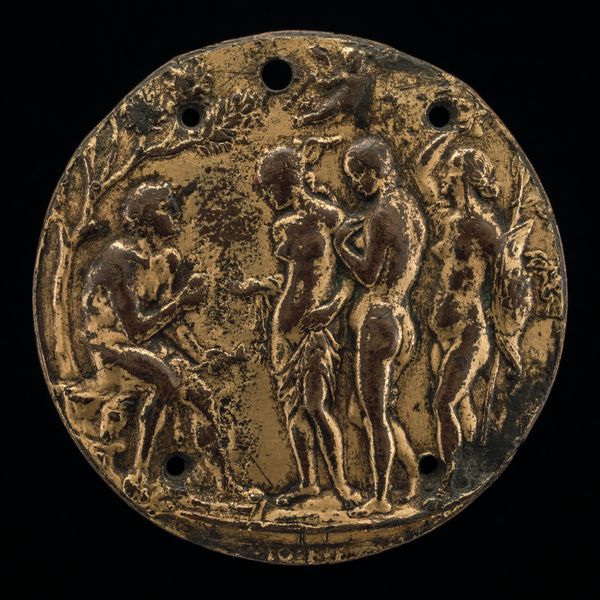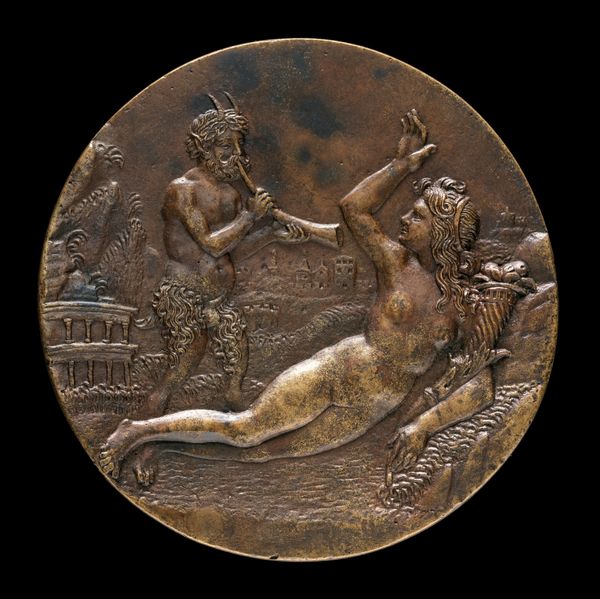
bronze, sculpture
#
stone
#
sculpture
#
bronze
#
figuration
#
sculpture
#
history-painting
#
italian-renaissance
#
nude
Dimensions: overall (diameter): 6.8 cm (2 11/16 in.) gross weight: 66 gr
Copyright: National Gallery of Art: CC0 1.0
Curator: What strikes me immediately is the nonchalant air of the figure—is that Jason?—standing there, bow at the ready, but he’s totally at ease with the dragon. The dragon seems…more like a perplexed, scaly house pet. Editor: That’s a fascinating reading. This piece, entitled “Jason and the Dragon,” is attributed to Pseudo Antonio da Brescia, and dates back to the early 16th century. It's cast in bronze, and considering the era, these medallions often served as portable propaganda, miniature stages for the ideals and mythologies circulating within elite circles. Curator: Portable propaganda! I love that. But doesn't this portrayal fly in the face of that? It isn't this grand, heroic battle, all billowing muscles and terrified beast, like one would expect from something trying to sell you on heroism and classical ideals. This Jason barely looks inconvenienced. Editor: That's precisely the point. The artist, rather than focusing solely on overt displays of valor, seems to underscore the almost casual authority Renaissance figures aspired to embody. It's about power assumed, rather than actively fought for. Jason's nude, his stance, it is a declaration. Curator: But what's up with the dragon then? He looks like he needs a belly rub, not about to get impaled. Maybe the message is about the power to charm, or pacify threats. Isn't that little town in the background interesting too? He’s defending it. Editor: Yes, it is. The backdrop suggests a world that benefits from this subtle, almost intellectual control. It's the early Renaissance version of leading by seeming to hardly lead at all! Power wasn't about brute strength. It was about inherent superiority and refined composure. Curator: Okay, I'm beginning to buy into your theory. This tiny bronze world is whispering a whole story of how power wanted to see itself at the time, the ideals circulating at the time... all hidden within this snapshot of a bronze moment. Thank you. Editor: And thanks to you, this dialogue offers the perfect space to consider how artifacts like this mediate between ideology, artistic practice, and the individual. It makes me want to seek out what isn't shown, and ask the questions behind it all.
Comments
No comments
Be the first to comment and join the conversation on the ultimate creative platform.
